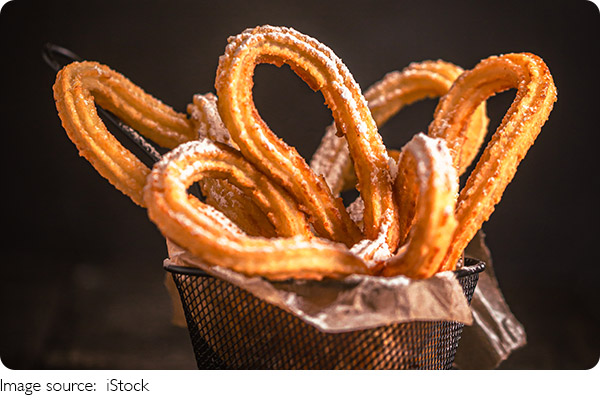Sweet Classics

Desserts have a special way of connecting us — they carry stories, traditions, and flavors that reflect cultures across the globe. But among countless sweets, some stand out as true classics, loved for generations and often tied to celebrations or daily comfort.
Instead of a broad overview, let's zoom in on what makes these desserts so memorable: their unique ingredients, preparation methods, and cultural significance. This deeper look can enrich your appreciation for these treats next time you indulge.
Tiramisu – Italy's Velvet Dream
Tiramisu's allure lies in its delicate balance of textures and flavors. Made from layers of espresso-soaked ladyfingers, mascarpone cheese, cocoa powder, and sometimes a hint of flavoring, it's creamy but light. The key to an authentic tiramisu is using strong espresso and fresh mascarpone — these elements create its signature richness without heaviness.
Its name means "pick me up" in Italian, reflecting both the caffeine kick and the comforting sweetness. More than just a dessert, tiramisu has become a symbol of Italian hospitality and casual elegance.
Crème Brûlée – France's Caramelized Delight
Crème brûlée is a simple yet sophisticated dessert featuring a rich custard base topped with a crisp, caramelized sugar crust. The contrast between creamy and crunchy textures is what gives it magic.
The secret lies in baking the custard slowly in a water bath to ensure smoothness and torching the sugar just before serving to keep that crackling top fresh. It's a classic example of how technique can transform simple ingredients—cream, eggs, sugar, and vanilla—into something extraordinary.
Churros – Spain's Fried Comfort
Churros are crisp, fried dough sticks often dusted with sugar and served with thick chocolate dipping sauce. Their appeal is simple: warm, crunchy exterior with a soft, airy interior.
Originating as a quick snack for shepherds, churros have become a beloved street food and breakfast item. The secret to perfect churros lies in the dough consistency and frying temperature — these determine the crunch and lightness.
Pavlova – A Meringue Masterpiece from Australia and New Zealand
Pavlova is a dessert built on crisp meringue shell with a soft, marshmallow-like inside, topped generously with whipped cream and fresh fruit. Its airy texture is unlike typical cakes or pies.
Named after the ballerina Anna Pavlova, this dessert celebrates lightness and elegance. The delicate balance of crisp and soft textures requires precise egg white whipping and careful baking, rewarding patience with pure delight.
Cheesecake – Creamy Comfort Worldwide
Cheesecake has countless variations globally, but the essence is a smooth cream cheese filling over a crumbly base. Its appeal is in the rich, creamy texture balanced by a slight tang.
New York-style cheesecake, dense and rich, contrasts with lighter versions like Japanese soufflé cheesecake. Technique and quality of cream cheese define the final experience, showing how small changes create vastly different results.
Mochi – Japan's Chewy Tradition
Mochi is a chewy, sticky rice cake often filled with sweet red bean paste or ice cream. Its texture is uniquely stretchy and soft, offering a different kind of sweetness.
Making mochi requires skill to pound steamed rice into the perfect consistency. The combination of simple ingredients with intricate technique results in a dessert that's both playful and satisfying.
Macarons – French Elegance in a Bite
French macarons are delicate almond meringue cookies sandwiched with flavorful fillings like buttercream or ganache. Their crisp shell and soft interior create a sophisticated texture contrast.
Mastering macarons demands precision in ingredient ratios and baking time. Their variety of flavors and vibrant colors make them popular gifts and treats worldwide.
Rice Pudding – Comfort in Simplicity
Rice pudding is a creamy dessert made from rice simmered in milk or cream, sweetened and flavored with cinnamon or vanilla. Found in many cultures, it's a symbol of homely comfort.
Its charm is in the slow cooking that allows rice to absorb flavors fully, turning simple ingredients into a soothing, nostalgic treat.

Desserts are more than just sweet endings; they reflect history, culture, and craftsmanship. Next time you enjoy one of these classics, take a moment to appreciate the story behind it — the techniques perfected over centuries and the emotions they evoke. Which of these desserts would you love to try first, or maybe recreate at home? Your sweet adventure awaits!
-
 Retro Sound AnywhereWhy a Portable Analogue Record Player Could Be the Coolest Way for Us to Enjoy Music Anytime, Anywhere!
Retro Sound AnywhereWhy a Portable Analogue Record Player Could Be the Coolest Way for Us to Enjoy Music Anytime, Anywhere! -
 Timeless & Trendy PragueExplore the timeless charm and modern vibrancy of the Czech capital.
Timeless & Trendy PragueExplore the timeless charm and modern vibrancy of the Czech capital. -
 Investor's Crucial ChoiceHow to Balance Safety and Growth: Fixed Deposits and Leasing Explained!
Investor's Crucial ChoiceHow to Balance Safety and Growth: Fixed Deposits and Leasing Explained!